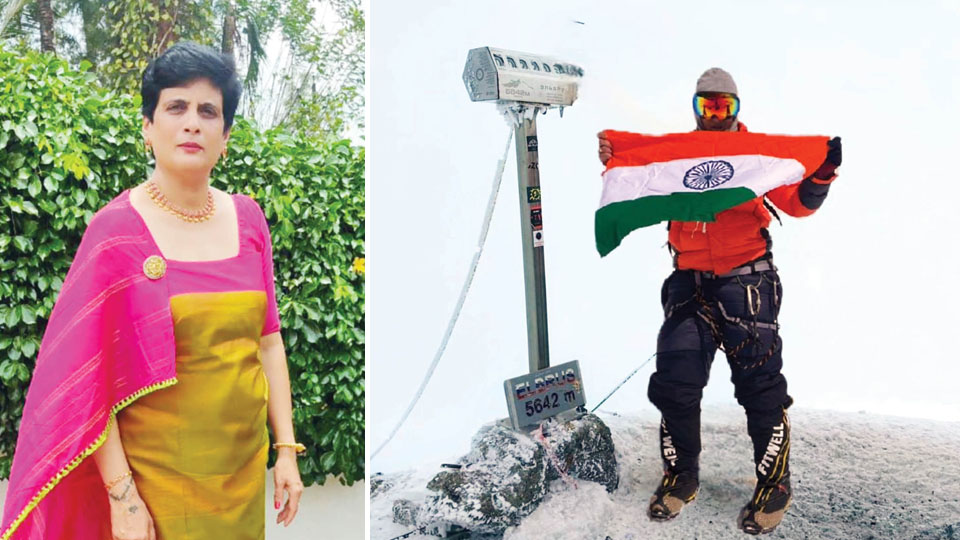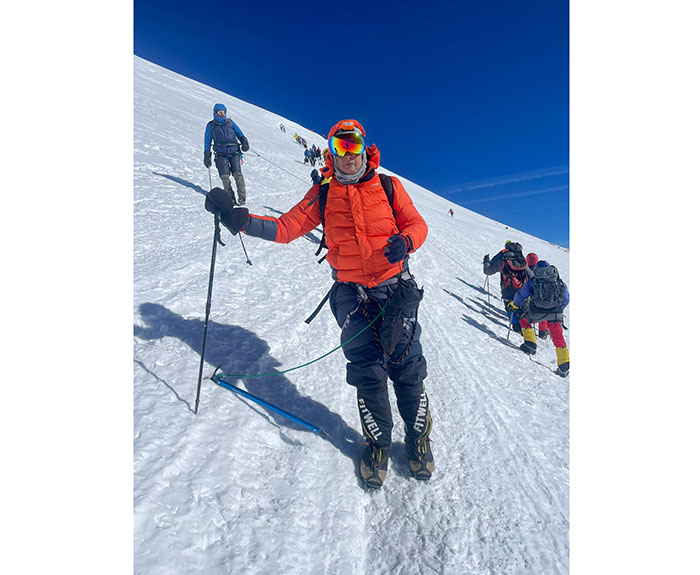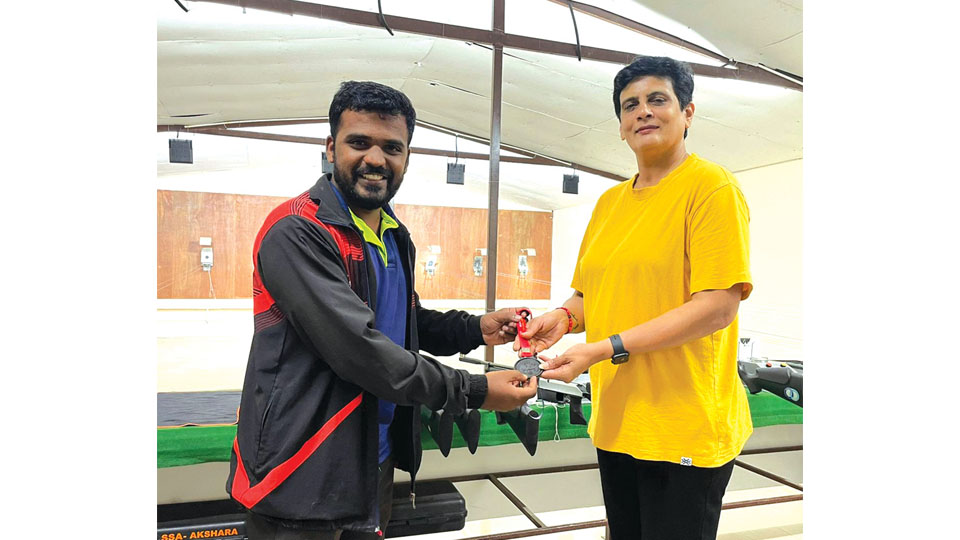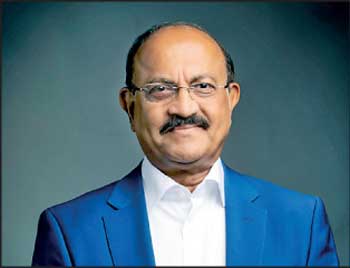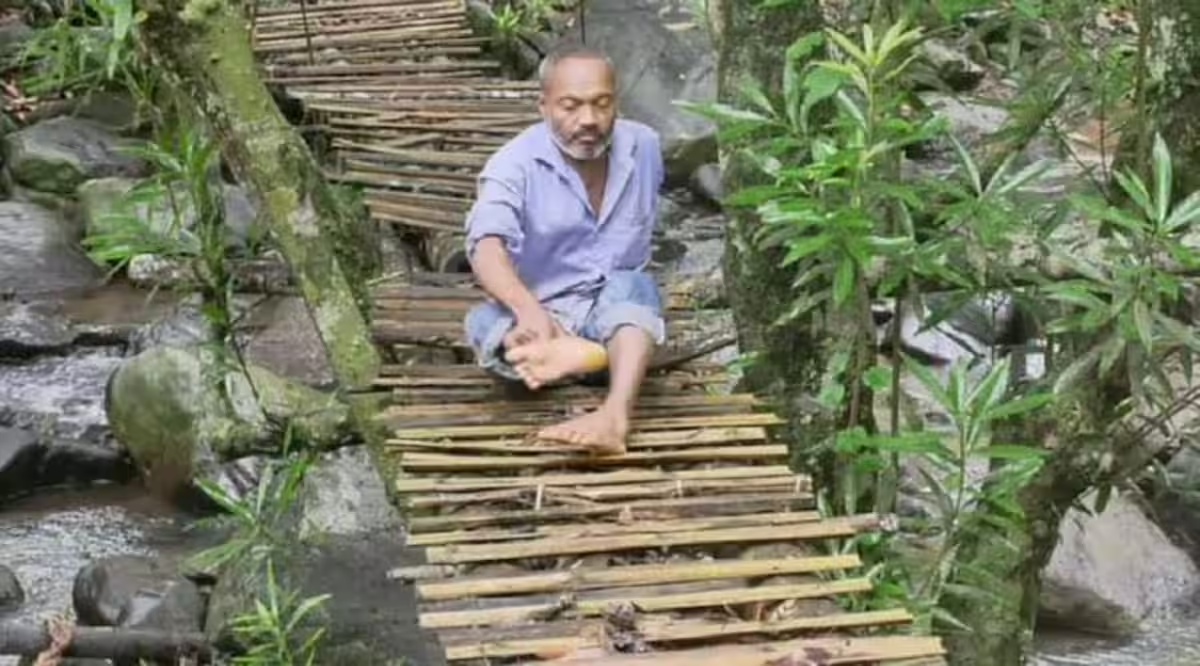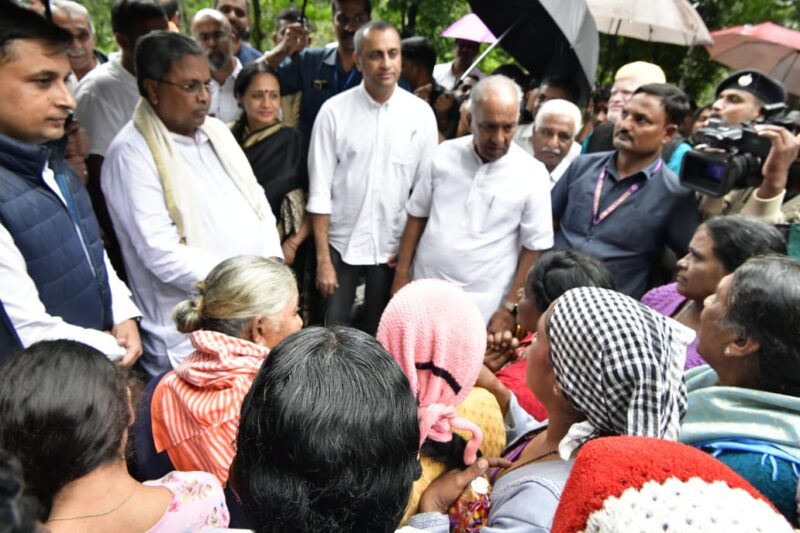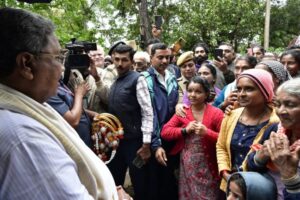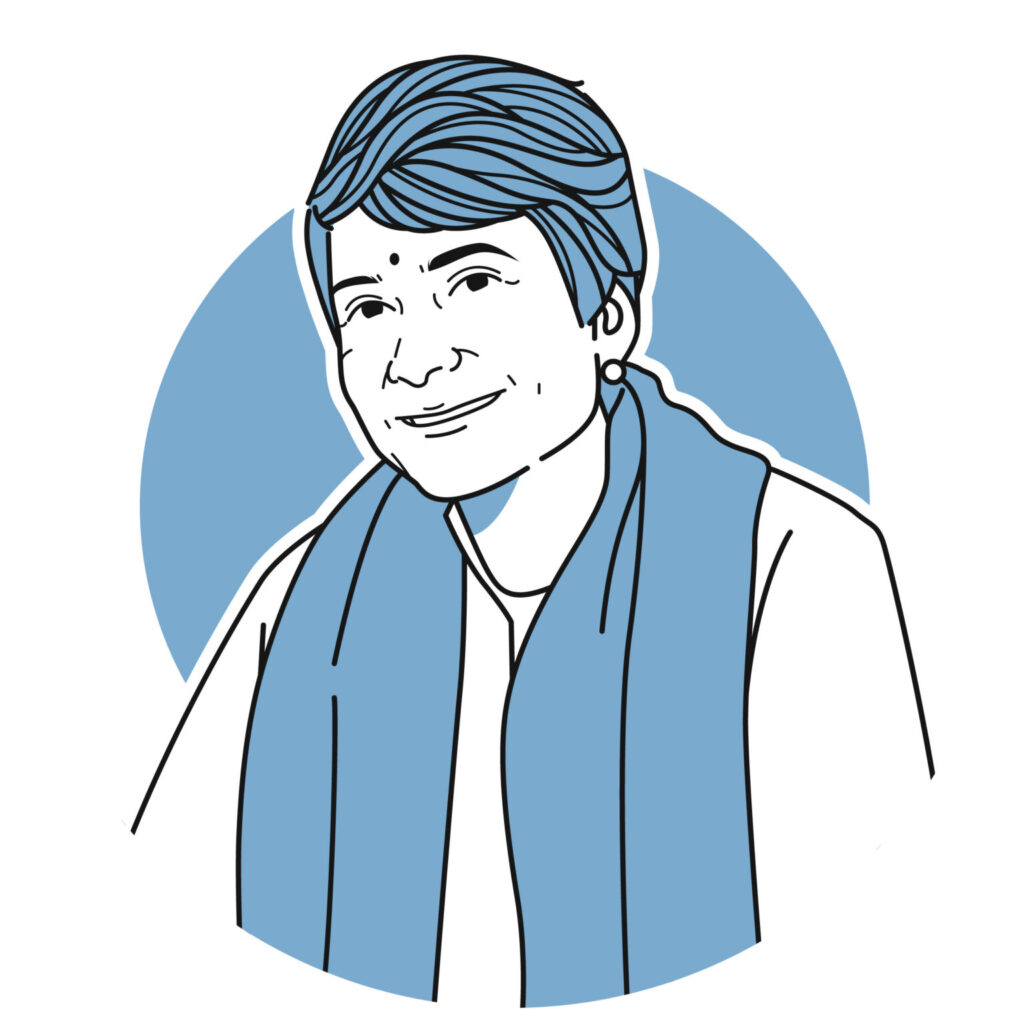
Welcome to The Sprudge Twenty Interviews presented by Pacific Barista Series. For a complete list of 2024 Sprudge Twenty honorees, please visit sprudge.com/twenty.
“Today’s earthly embodiment of the virtue of grace would have to be the inimitable Sunalini Menon, an extraordinary woman who I consider to be both a mentor, and one of the world’s greatest coffee cuppers. I first witnessed her quiet self-assurance and profound knowledge of coffee at work in Singapore, when I had just moved from Papua New Guinea. A couple of gentlemen were trying to flog me coffee from Yunnan, China, which was just coming on as an origin. “As good as a Costa Rican hard bean,” they blustered loudly. Sunalini happened to be cupping with and coaching me that afternoon, but they clearly didn’t know her and assumed she was just another woman who could be hoodwinked and bullied.
As we started to cup their samples, Sunalini gently probed them with questions on the varieties they had planted. Was it a first or second-generation cross as the Catimor cup was clearly coming through? Perhaps the parenting might have been from xyz stock as that taste was in the finish, didn’t they think? And where had the progenitor plant material come from as it tasted rather more along the lines of lmn than xyz, didn’t they think?
With every softly spoken question, her deference combined with her indisputable empirical knowledge of what she was cupping put the gentlemen further on the back foot. I watched their posture literally move from forward leaning, imposing, nearly bullying to quiet, defensive, and ultimately defeated. The lids came down over their eyes, their body language shut down, they were silenced. It was a prize-winning performance, the likes of which I have not since seen. Never once did Sunalini raise her voice or humiliate. Instead, with soft-spoken words underpinned by the undisputed certainty of her palate and her knowledge, she whipped them. Always immaculately clad in the bright and decorative costumes of her native India, Sunalini’s personal and professional elegance are an inspiring beacon to other women in coffee.”
Nominated by Shirin Moayyad
How many years have you worked in the coffee industry?
I joined the coffee industry as early as 1971, commencing with the Government of India organization of the Coffee Board, where I served 20 years. When I joined the Board, the marketing for Indian coffee was being carried out by the Board, considering that the farmers, majority of whom were small and tiny farmers, were not very conversant with the marketing of their coffees nor the international market pricing for coffee. In the year 1995, the coffee market got liberalized, with the farmer not only cultivating coffee, but also marketing his coffee produce, when I decided to move from the governmental sector to the private sector, considering that the excitement would now be in the private sector. In fact, when the market got liberalized, I almost decided to give up my job in coffee, as my husband had moved to the Middle East along with my daughter to work in a US bank. However, as the farmers in India requested my help, considering that they were not very familiar with the quality aspects of coffee nor were they conversant with the marketing of their coffee, I decided to stay on in coffee!
I set up a coffee laboratory, which was the first of its kind in India, with the help of the farmers, where I could evaluate the quality aspects of coffees of all in the coffee value chain. Most importantly, my focus was on the coffee farmer and the post harvesting measures he would need to follow and implement on his farm, to ensure the quality of his end product.
My journey started in the private sector on 1st September 1995, with my lab coming into full operation on the 1st of January 1996, handling the quality aspects of Indian coffee from the coffee season of 1995/1996.
A long journey of 50+ years in coffee—energising, stimulating and exciting!
What is your current role in coffee?
My current role in coffee is not only to evaluate the visual and cup quality of coffees grown in India and from across the world, but also to help the Indian coffee farmer and his counterpart in other coffee producing origins to improve the quality of his produce, from the time of harvest till the time the coffee is served to the consumer.
Apart from helping and educating the coffee farmers in India and around the world, I also help in certifying the quality of coffees purchased by international buyers and roasters of coffee, who have specific requirements on the quality of the coffees that they purchase from India.
Teaching and imparting knowledge on the important correlation between post harvest processing of coffee and quality in the cup, has also been an important facet of my career, whereby I have been conducting teaching courses not only in India, but also at the Universita del Caffe, Trieste, Italy, under the University of Udine and the Ernesto Illy Foundation. This has been an important aspect of my career, being able to teach and put across the finer points of quality to young professionals and entrepreneurs, who want to pursue coffee as a career.
The café culture in India, which opened its doors on 1st January 1996, has also enabled me to develop different blends and single origin coffees, helping to present varied taste profiles of coffee to the Indian consumer. The lab helped in developing various blends for the first Café, which started the Café culture in India, with these blends being served, even today, at its various outlets opened in urban and rural India. The lab has helped many cafes in their journey to serve a good cup of coffee to the consumer, which has become an important role in my coffee journey.
I also help in providing consultancy and advice to new start-ups on the quality aspects of coffee, [in particular for] start-ups in roasting and in the cafe industry.
Overall, my current role in coffee is focusing on the quality of the coffee produce, which is cultivated by the producer, exported to the buyer, roasted by the roaster and served in cafes and coffee shops, to be enjoyed by the consumer.
What was your first coffee job?
My first job was that of an Assistant Cup Taster at the Coffee Board of India, a designation which brought with it a lot of laughter. To me, the designation of “Assistant Cup Taster” sounded exotic, whereas, to all my friends, the designation not only brought laughter, but also the exclamation, “you taste cups and cups and even get paid for it.” Well, that was my first coffee job, where I learnt that coffee was a fruit and that we drink the seed of the fruit. I learnt how the seed could be extricated from the fruit, how to roast it, how to brew it, and how to cup it. It has been a long journey of excitement, adventures, and knowledge acquisition, though, at times, it has also been frustrating and disheartening!
Did you experience a life-changing moment of coffee revelation early in your career?
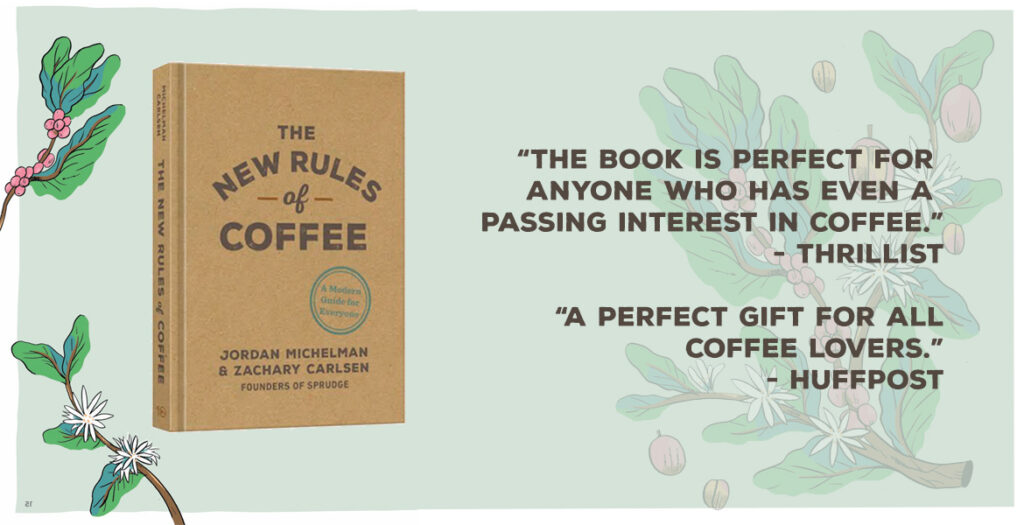
The coffee revelation came early in my career when I went to a coffee farm. I thought coffee harvesting and processing were very simple exercises, with machines carrying out most of the work, but what I saw on the field was a moment of great revelation to me and changed my whole concept of life in general.
I vividly remember my first visit to the coffee plantations. It was truly a memorable experience. Selective harvesting of those ripe red cherries by nimble and experienced hands was a fascinating sight—watching women covering their heads with scarves, tying jute bags around their waist, darting under tall coffee plants with tiny droplets of dew and gusty winds blowing around them, creatures of all sizes and shapes crawling all over them and yet those tender loving hands picking only just ripe red cherries deftly and with speed. What care, what precision, what patience! Look into the bag and you find only just ripe red cherries. Talk to them—there is only a smile which flashes back at you, a smile of satisfaction, a smile of thanks, a smile of humility. I learnt a lesson during that visit that, even in any situation of hardship and difficulty and in adverse conditions of work, you would still need to maintain a balance and carry out the task that is before you with care, humility, and dedication.
The women working in the coffee fields have been a source of inspiration, besides being my role models in my journey in coffee, teaching me my coffee principles, teaching me that life should be accepted in all its fullness and that strength does not come from a physical capacity, but from an indomitable will—the will to survive, the will to move forward, the will and the courage to change the things we can, and the will and the wisdom to accept the things we cannot change.
What facet of the coffee industry has changed the most during your career?
What has changed the most during my career has been the change in the perception of coffee as a brew, as a beverage and as a drink. When I was growing up in coffee, it was coffee brewed on the Indian filter, a contraption which resembles the “Neapolitan” coffee maker of Italy, wherein the coffee is extracted through infusion and by gravity. The coffee, which is brewed, is thereafter mixed with milk and sugar and served in Indian households and in small coffee outlets called “Darshinis”, which are located by the wayside in India.
Today, in India and in other producing and consuming countries, where tea has been the main beverage that is consumed, coffee has become a way of life. It is looked at as a drink, which is not only brewed on the Indian filter and served with milk and sugar, but brewed in exotic ways on different brewing equipment, whose principle of extraction is different, creating different taste profiles in the cup.
In my country, coffee is no longer looked at as a drink for the elderly and to be drunk at home. It is considered a hip beverage and drink, which is served in cafes, which have sprung up in every nook and corner of urban and even rural India. The Millennials and Gen Z’s have changed the face of coffee not only in my country, but also in the world around us, making us understand that there are waves in coffee, which change the appearance of the coffee bean and its taste profile.
At present, issues like quality, sustainability, wellness/health, and convenience are becoming the mainstay of the world coffee industry, with consumers not only wanting to understand the quality, sustainability, and health benefits of the coffee they are drinking, but also wanting their cup of coffee to be served in a convenient format such as a pod, a capsule, an RTD, a cold brew, or as a crafted instant coffee. This is a far cry from the 1960s, when all we saw the bean being extricated from the fruit!
Is there a person or persons who served as your mentor early in your coffee career? How did they impact you?
Yes, there are many persons who have served as my mentors when I started my career in coffee. I was perhaps the first woman to enter the coffee arena in India and I use the word “arena” because coffee was entirely a male-dominated bastion when I entered the Coffee Board of India. I found that I was the only woman in the officer’s cadre at the Board and had to develop the strength to wade through this “male” cup of coffee and not just wade through this cup, but also ensure that my work in the taste profile of the cup would be appreciated!
It has been a long journey… a journey which made me look up to different mentors and individuals, who shaped my life in coffee.
My first mentor was the late Dr. Ernesto Illy, whom I met at a fair in Trieste, when I was busy hanging up various paraphernalia of articles at the India booth. He was surprised to see a young Indian woman in coffee and took me into his fold, teaching me not only the taste aspects of coffee, but also the chemistry behind the taste nuances in coffee. He was a superb taster, helping me to understand how to identify the different attributes in the cup and most importantly, to relate the attributes in the cup to the chemistry of the coffee bean. He mentored me in my coffee career, for which I am extremely thankful.
The late Erna Knutsen, whom I met a couple of times during the SCA events in the US, also helped me to understand that a woman could be strong and grow in coffee, provided she develops the knowledge base in coffee. She helped me to understand that I need to read and learn about coffee, before I could speak on coffee. She made me understand that “knowledge is power” and without a knowledge base, I would be a dormant coffee bean!
Kenneth Davids is another mentor of mine, who helped me to develop my vocabulary in coffee. He is very calm and patient and a brilliant writer, who helped me to understand how to describe a cup of coffee and how to put it across, in a simplistic manner, to the average consumer.
What still surprises you today about coffee, or gives you joy?
Today, what still surprises me about coffee is the fact that I can never say “I know it all.” Every day is a new and stimulating experience for me, giving me joy in understanding and appreciating the various taste nuances and taste profile of a cup of coffee. When you taste pure 100% Arabica of a certain variety, you get certain flavor notes and when I taste the same 100% Arabica, but pertaining to a different variety, I get an array of different flavor notes and that’s what gives me joy—the joy of discovery, the joy of experiencing, and the joy of tasting a varied cup of coffee every day!
What’s something about the coffee industry you’d most like to see change?
The change that I would like to see in the coffee industry is to see the coffee farmer being highlighted and given prominence, when one drinks a cup of coffee. Today, when one drinks a cup of coffee, we are mainly talking about its flavor and perhaps, some information about how it was processed and from where it was obtained. However, not very many consumers are aware of the hands behind the beans, the hands which have toiled and produced that exotic cup of coffee. I would like to see the change where it would be the farmer in focus and thereafter, all the other factors of terroir, altitude, shade pattern, certification, and taste nuances. Giving the farmer the prominence, with his caricature or a photo and a few lines on him/her and the family, could perhaps help in enhancing the taste profile of the cup of coffee, as one would appreciate and understand the hard work that has been put in by those caring hands, to produce that tasty cup of coffee!
What is your most cherished coffee memory?
Among the very many cherished coffee memories that I have, the one that holds a light in my mind is the memory of a hardcore Arabica buyer, who disliked the Robusta bean, but came to appreciate it at my lab. I still remember the hardcore buyer talking only about Arabicas and was even averse to the mention of the word “Robusta”. I wanted to understand why this buyer was so averse to the Robusta bean. Hence, when he came to my lab to carry out cupping of various Arabica coffees, which he was proposing to taste and then purchase, I slipped in a Robusta cup in-between the cups of Arabica coffee and had written the details of the Robusta bean under the cup, as I did with all the Arabicas.
It was a blind cupping session. The buyer was a good taster too. He cupped all the coffees and when he came to the Robusta cup, he stopped for a while, tasted it, re-tasted it, but he did not mention any negatives and proceeded with the cupping. At the end of the cupping round, he came back to this cup of Robusta coffee, tasted it and asked me as to what this cup was all about? My first reaction to his question was not the answer, but asked him as to whether he appreciated the cup or whether this cup was not up to his expectations. The answer I got was quite surprising.
The cupper stated that the cup was different, but he liked it as it had some unique notes, which he found to be not only different, but also very acceptable. I was overjoyed, but did not show my happiness and instead asked him to lift the cup when he would see the details of the coffees, which had been prepared and served at the table for cupping. He lifted the cup and for a moment, his face changed color. I could see him absolutely confused, when he turned round to me and said “No, this cannot be Robusta!” I said yes, it is a well prepared washed Indian Robusta. He was shocked.
What I liked about him was that from that cupping day onwards, while he may not purchase Robustas, he does not talk poorly of the Robusta bean. In fact, whenever he discusses the species of Arabica and Robusta, I can hear him saying that Robusta too is quite a distinct bean and that there are buyers who love the bean and there are those who still have not been able to find the usage for this coffee species. This is a memory that is etched in my mind and which I will never forget.
Do you make coffee at home? If so, tell us how you brew!
Yes, making coffee at home is a ritual. I grew up in a home where coffee was brewed every morning on the Indian filter and me and my sister, as children, would wake up to the aroma of the coffee brewed by my grandmother, which would hit our nostrils and be our “wake up” call for the day to begin.
The brewing is a very simple methodology. The coffee is a form of Drip Filter, brewed by infusion and gravity. The Indian filter comprises two vessels placed one on top of the other. The top vessel has small holes through which the brew is extracted. The coffee powder is placed in the top container and to ensure that the coffee bed is not disturbed when hot water is poured for brewing, a plunger is placed on top of the coffee bed. Hot water is then poured into the top container and the hot water passes through the bed of coffee powder, slowly extracting the coffee flavors from the coffee powder and drips down by gravity into the lower container. Generally, we take about 10g of coffee powder to about 100 to 120ml fresh boiling water, though this ratio would depend on the taste preference of the person who is brewing and drinking the cup of coffee. It takes about eight minutes for the coffee to be brewed and thereafter, a cup of coffee, either with or without milk and sugar is enjoyed.
Depending on the time of day and my mood, I vary my ratio of coffee powder to water and enjoy my cup of ‘black coffee’!
What is your favorite song/music to brew coffee to?
My favourite song is ‘Black Coffee’ by Ella Fitzgerald.
What is your idea of coffee happiness?
My idea of coffee happiness is working with the small coffee farmer, helping him to understand the coffee beans that he produces, standing with him while he processes his coffee beans and thereafter, cupping with him and helping him to understand how the flavor attributes and taste profile get developed in the coffee cup through his helping hands. It gives me joy to see the light and smile on the tiny coffee farmers face when his coffee is recognized and appreciated by roasters, buyers, and consumers around the world. The joy on his face is what brings me happiness.
If you could drink coffee with anyone, living or dead, who would it be and why?
I would like to drink coffee with my late grandmother. It was she who introduced me to the aromatics of coffee. Every week, I would walk with her to the nearby coffee store, where she would chose her roasted beans, prepare her blend, get the blend ground to her specifications and thereafter, carefully carry the coffee packet home, to being brewed every morning. As a child, I was fascinated by this exercise of round shaped beans and flat beans being mixed together; at that point of time, I did not know that it was a mix of round beans of peaberry and flat beans of Arabica.
What I loved about the entire experience was that, I not only walked with my grandmother to the nearby store to see the blend being made and the coffee beans being ground, but also enjoyed the aromatics of the coffee powder and the aromatics of the brew, which hit my nostrils every morning as a “wake up” call to start my day.
My grandmother would brew the coffee on the Indian filter and drink the coffee from a special mug, which we call “Sombu” in India—a large container with a long neck, which can hold almost 400ml. of coffee. She would sit along with my sister and myself, drinking her “Sombu” of coffee, with both of us sisters looking at the coffee beverage “longingly” and drinking our glass of milk. No amount of pleading would enable us to sip her “Sombu” of coffee, but her condition was that, if we study and behave well throughout the day, she would add a few drops of the coffee beverage to our milk, the next day. This is a memory I will never forget.
What’s one piece of advice you would give someone getting their start in the coffee industry today?
Traversing coffee is a very adventurous and stimulating journey, but one needs to learn and understand the different facets of the coffee bean. It is a long journey of studying, understanding, and appreciating the bean, with the challenge of the aromatic nuances of the coffee brew not being easily discernible. However, I can state with confidence that, embarking on the coffee journey is invigorating and inspiring. Once you start on the journey, you will never look back, but only look forward, to continue traversing the flavourful, yet challenging road to energy, excitement and exhilaration!
Thank you so much.
The Sprudge Twenty Interview series is presented by Pacific Barista Series. For a complete list of 2024 Sprudge Twenty honorees and interviews, please visit sprudge.com/twenty.
